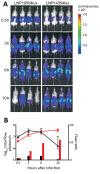Neisseria meningitidis Serogroup X in Sub-Saharan Africa
- PMID: 26982628
- PMCID: PMC4806945
- DOI: 10.3201/eid2204.150653
Neisseria meningitidis Serogroup X in Sub-Saharan Africa
Abstract
The epidemiology of meningococcal disease varies by geography and time. Whole-genome sequencing of Neisseria meningitidis serogroup X isolates from sub-Saharan Africa and Europe showed that serogroup X emergence in sub-Saharan Africa resulted from expansion of particular variants within clonal complex 181. Virulence of these isolates in experimental mouse models was high.
Keywords: Neisseria meningitidis; bacteria; emergence; meningitis; meningococci; serogroup X; sub-Saharan Africa; virulence; whole-genome sequencing.
Figures


References
-
- World Health Organization. Meningococcal disease control in countries of the African meningitis belt, 2013. Wkly Epidemiol Rec. 2014;89:206–14. - PubMed
-
- Etienne J, Sperber G, Adamou A, Picq JJ. Epidemiological notes: meningococcal meningitis of serogroup X in Niamey (Niger) [in French]. Med Trop (Mars). 1990;50:227–9. - PubMed
Publication types
MeSH terms
Substances
Grants and funding
LinkOut - more resources
Full Text Sources
Other Literature Sources

